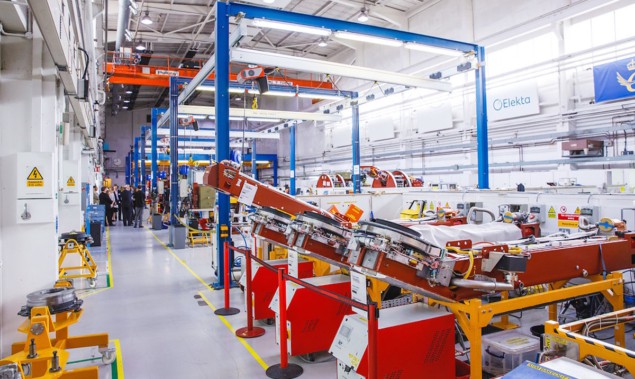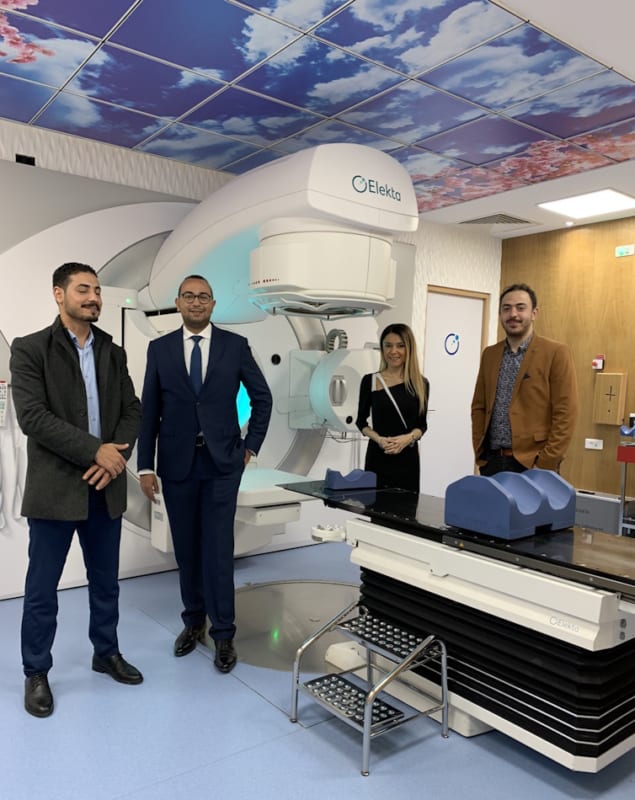
The global inequity in access to radiotherapy services is systemic, hard-wired and not going away anytime soon. The data don’t lie, with the gap between radiotherapy “haves” and “have-nots” dictated, for the most part, by the economic clout of individual nation states.
According to the International Atomic Energy Agency (IAEA), an intergovernmental organization that seeks to promote the peaceful use of nuclear energy, nearly all cancer patients in high-income countries have access to radiotherapy – versus fewer than 60% of patients in middle-income countries. Worse still, in low-income countries, just one in 10 people has access to life-saving radiation treatment.
This disparity in access represents a healthcare timebomb. Cancer, almost inevitably, places its heaviest burden on low- and middle-income countries (LMICs), where over 70% of cancer deaths are expected to occur in the next 20 years. The IAEA’s Rays of Hope: Cancer Care for All initiative, launched on World Cancer Day in 2022, is in the vanguard of the collective effort to accelerate the establishment and expansion of radiotherapy services in LMICs.
To date, seven “first-wave” countries – Benin, Chad, Democratic Republic of Congo, Kenya, Malawi, Niger and Senegal – have received radiotherapy and medical imaging machines as part of the IAEA initiative (with specialist training programmes also part of the mix for clinical staff involved in diagnostic and treatment services). Although it’s early days, 67 additional IAEA member states have since requested to join Rays of Hope at the national level – an indicator of the long-game thinking that will be needed to democratize access to high-quality radiotherapy treatment.
Public–private partnership
Meanwhile, the private sector – driven by commercial imperatives like market share and profitability – is increasingly turning its attention to questions of radiotherapy access in LMICs. A case study in this regard is Elekta, a specialist equipment provider in precision radiation medicine, which has put access to radiotherapy services front-and-centre in its long-term growth strategy to open up new markets for radiotherapy equipment within LMIC healthcare systems.

A global workforce of around 5000 employees positions Elekta to make a difference – near-term and at-scale – when it comes to the roll-out of advanced radiotherapy infrastructure in developing countries. “We’re seeking to improve radiotherapy access through a number of growth initiatives you might expect – as well as some initiatives you might not expect,” explains John Christodouleas, Elekta’s senior vice-president of medical affairs and clinical research (also adjunct associate professor of radiation oncology at the Perelman School of Medicine, University of Pennsylvania).
Significantly, that commitment to enhanced access is driven top-down from the Elekta boardroom, with one of the equipment maker’s strategic milestones (by the end of 2025) linked to “availability of care” – and targeting over 300 million people to gain access to radiotherapy services through the deployment of 800–1000 additional Elekta linacs in underserved markets.
Complementary strategic objectives relate to “elevation of care” (doubling the clinical usage of short-course hypofractionation treatments among Elekta customers, while quadrupling the use of adaptive radiation treatments) and “participation in care” (with a target of more than 20% of patients actively interacting with their own care journey, compared with less than 1% today).
“Operationally,” notes Christodouleas, “our commitment to improved radiotherapy access is organized along three main pathways: support for cancer public-health initiatives; access to human capital; and access to advanced radiotherapy solutions that offer increased automation and decreased capital and service costs.”
Take cancer public health, for example. In September of last year, Elekta and the IAEA announced a formal partnership to promote the value of radiotherapy to health ministries in underserved regions, while also investing in health education programmes to raise public awareness about cancer.
Along the same coordinate, the Elekta Foundation (a Swedish philanthropic organization independent of the main Elekta corporate group) is funding a pilot screening programme for cervical cancer in the Gicumbi district of northern Rwanda – screening over 40,000 women since August 2022 and treating over 1000 patients for precancerous lesions.
Technology innovation, clinical impact
By extension, argues Christodouleas, “access to skilled human capital in radiation oncology is just as big a problem as access to financial capital for LMICs.” To address the imbalance, Elekta has invested in open-access online education programmes like the BrachyAcademy, a peer-to-peer medical information platform for radiation oncology teams.
While the web portal is upfront about curating information on Elekta’s brachytherapy products and services, the programme also covers vendor-neutral information and cutting-edge research on clinical applications. “I’m a big fan of these best-practice initiatives because they scale very effectively,” adds Christodouleas.

The final part of the access puzzle is Elekta’s “bread and butter”: the delivery of advanced radiotherapy systems to clinical customers all over the world. Of course, selling a radiotherapy treatment system in the US – where there’s an established network of healthcare providers and robust Elekta support services – is a very different proposition to operating in underserved regions where those infrastructures might be limited.
Wherever the market, it’s all about a granular understanding of the clinical customer’s requirements, argues Christodouleas, citing the roll-out of Elekta radiotherapy systems as core building blocks within Morocco’s National Cancer Plan over the past decade. That roll-out started with initial linac orders in 2013 before progressing through brachytherapy units (2014–16), Leksell Gamma Knife stereotactic radiosurgery systems (2017–19), and, most recently (2020), orders that include Elekta Unity, Elekta’s most sophisticated linac integrated into a high-field MRI system.
“The partnership has been a win–win for Morocco’s ministry of health and for Elekta,” says Christodouleas. “We worked diligently to get our treatment systems in place, but also to put the necessary vendor infrastructure in place. Field service engineers, equipment supply chains, applications specialists, regional distributors – all of these are critical to establish and grow a sustainable radiotherapy programme at the national scale.”

Physicists innovate to close the global radiotherapy gap
More broadly, what of the prospects for improved radiotherapy access in LMICs? Christodouleas is optimistic that the two fundamental challenges for the radiotherapy community – enhanced treatment quality (via ever-increasing precision of radiation delivery) and dramatically increased access in underserved regions – can perhaps be addressed in tandem.
“I think of the radiotherapy access equation in simple terms,” he concludes. “Hypofractionation plus automation equals increasing access. Both hypofractionation and automation are enabled with better onboard imaging. So, our best linacs with the best imaging will be key to solving the access equation and delivering the highest quality of care to patients, no matter where they happen to live.”
- SEO Powered Content & PR Distribution. Get Amplified Today.
- PlatoData.Network Vertical Generative Ai. Empower Yourself. Access Here.
- PlatoAiStream. Web3 Intelligence. Knowledge Amplified. Access Here.
- PlatoESG. Carbon, CleanTech, Energy, Environment, Solar, Waste Management. Access Here.
- PlatoHealth. Biotech and Clinical Trials Intelligence. Access Here.
- Source: https://physicsworld.com/a/increasing-access-to-radiotherapy-playing-the-long-game/



